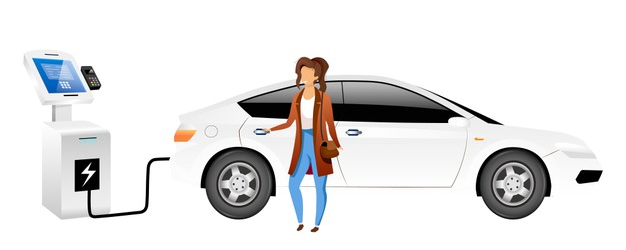Partnered Post
Types of Electric Vehicles
EV
EV stands for electric vehicle and describes a car that runs entirely on electricity. These cars do not have a combustion engine, instead, they have a large battery that is charged by plugging them into a power source at home or at a power point in a car park.
Plug-in Hybrid Vehicles
PHEVs are slightly different from EVs. They are essentially the same as hybrid vehicles in that they use combined power sources. The difference is they need to be plugged in to charge their batteries instead of through the engine. You can find out more at Sell My Car Direct.
Hydrogen Electric Vehicles
HEVs are still very rare due to the technology and price of the vehicles. They mix hydrogen with oxygen in a fuel cell to charge electric batteries. As a result of their rarity, there are very few hydrogen charging stations available at present.
Batteries
kWh
The batteries of electric vehicles are typically measured in kilowatt-hours (kWh). For example, a vehicle that has an 85kWh battery will have a real-world range of 259 miles. This means that you should use around 34kWh for every hundred miles.
Ah
Sometimes the batteries for electric vehicles are measured in Ampere Hours (Ah). For instance, a vehicle that has 60Ah will translate as 22 kWh and one that has 94Ah will translate to 33 kWh. Usually, it simply depends on the brand of the vehicle.
Charging
Types of charging
For electric-powered vehicles, there are typically three types of charging. There is a slow charge (3kW), a fast charge (7-22kW), and a rapid charge (43-50kW). The rapid charges are AC or DC. The higher the vehicles kW rating the faster it will charge
Types of plug
There are typically two types of plug for EVs, a Type 1 and a Type 2. The Type 1 plug has a 7 pin charging plug, and the Type 2 has 5 pins. The majority of vehicles use a Type 2 plug but some like the Mitsubishi Outlander PHEV uses a Type one plug. You can use an adaptor to convert the plug types.
Mains charging
One of the perks of EVs is cheaper fuel by charging from the mains. Most EVs have a plug suitable for mains charging. Although convenient, mains charging is slower than you might expect from a public charging point.
Wallbox or home charger
If you’re determined to charge your EV at home you can get a home charging station that will allow you to charge your vehicle conveniently. You can choose between a slow 3kW charger or a more expensive 7kW one. For a full charge, you will have to wait between 6-8 hours.
Public chargers
Public chargers are usually the best way to fill up your EV. They are fast, efficient, and sometimes even free. You will find a public charger at the roadside, in car parks, at service stations, and in hotel car parks. They are usually inexpensive or free and provide a rapid charging service.


Wow. I think this is the one everyone need to know nowadays since Electric cars are arriving with a huge market. Thanks for this one.
However, diesel and petrol cars are ruling the road. Electric car becomes the future in the UK. Thanks for this article.
This article explained clearly how to spot future vehicles in the UK. Thanks for this information.
Hello. Thank you for always good blog.